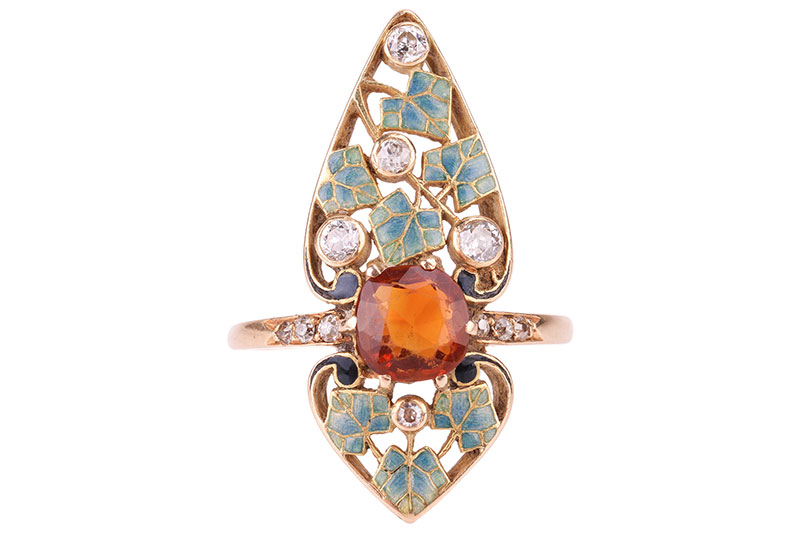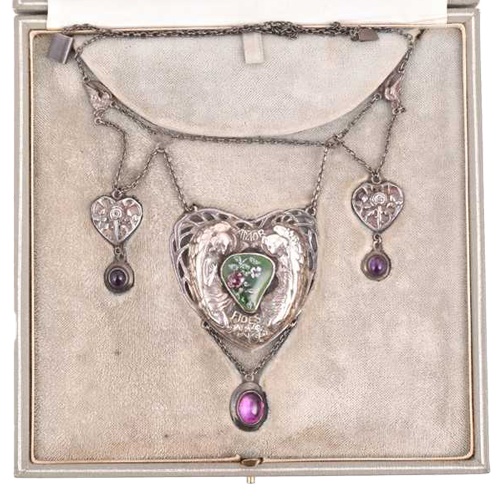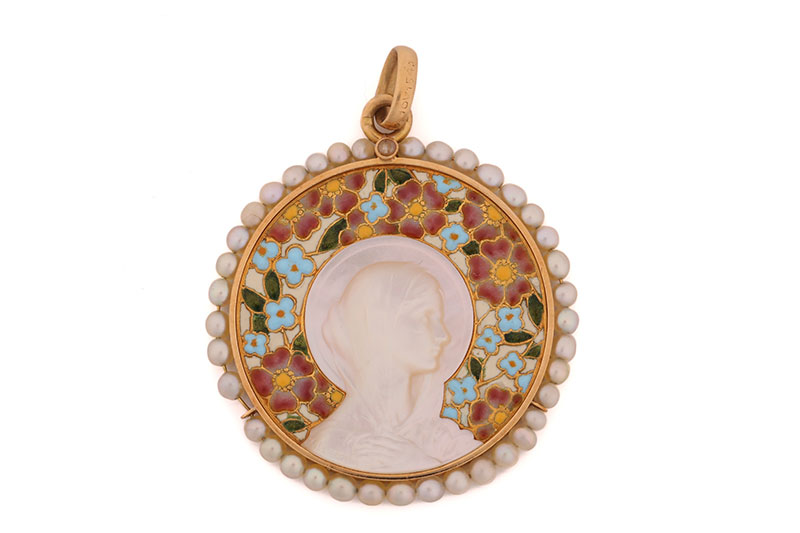What is the Style of Art Nouveau Jewellery?
One of the most formidable trends of the 19th century
13/05/2024
Considered one of the most formidable trends of the 19th century, the Art Nouveau movement flourished from the 1890s until World War I broke in 1914. The aesthetic originated in France and the term was derived from a Parisian Asian art gallery called “Maison de L’ Art Nouveau”. This remarkable period emerged in rebellion against growing industrialisation, resulting in exceptional jewellery pieces characterised by their organic, flowing forms and naturalistic motifs, representative of the craftsmanship and artistic skill of jewellery designers of that time; Art Nouveau jewellery is revered for its captivating and distinctive style.
Henri Dubret - an Art Nouveau gem-set foliage panel ring
At the heart of Art Nouveau jewellery lies a celebration of the natural world. Designers drew inspiration from the sinuous curves of flora and fauna, translating these elements into intricate and mesmerising pieces. Motifs such as butterflies, dragonflies, snakes, peacocks, spiders, lilies, orchids, chrysanthemums, and swirling vines were commonly featured, rendered in precious metals such as gold and silver as well as organic materials including ivory, horn, bone, carved hardstone, and blister pearls. Creations were often embellished with sensual iridescent enamels and shimmering gemstones. Elements of mythology, fantasy and Japonisme are also evident in Art Nouveau jewellery, indeed the greatest accomplishment of this era was the integration and celebration of the female form which had historically remained allusive.
An Art Nouveau white metal and enamel necklace
The Art Nouveau aesthetic embraced originality, imagination, creativity, and vividness of interpretation with emphasis on the overall design, rather than the intrinsic raw materials used. Jewellers sought to create a harmonious and cohesive visual experience, where the importance of form sometimes surpassed the function of a piece. Diamonds were used more so as accent stones, while moonstone, amethyst, opal, amber, aquamarine, citrine, peridot, and freshwater pearls were common. This holistic approach resulted in jewellery that was not only beautiful, but also deeply symbolic and expressive.
Frédéric Vernon - Art Nouveau 'Madonna' pendant in mother of pearl
Technically, Art Nouveau jewellery showcases the skilled craftsmanship of its makers. The most notable technique employed during this period was Plique-à-jour. This type of backless enamelling is extremely difficult and time-consuming, requiring the highest standards of craftsmanship. A transparent enamel is applied to a network of gauze-like cloisons or cells to create a stained-glass effect, often used to represent the gossamer of wings. Other techniques used were Basse-Taille and Guilloche - engraving decoration to the metal before applying an enamel, Champlevé enamel, and Pâte de Verre glass. Pale and subdued colour tones were used to achieve the often soft, mystical, and romantic mood that was Art Nouveau. Jewellery from this period is meticulously detailed, delicate, and often fragile.
The most prolific Art Nouveau jewellers were French glass designer and goldsmith René Lalique, Georges Fouquet, Lucien Gaillard, Henri Vever, Eugene Feuill Tre, and Leopold Gautrait. Authentic examples from these makers are highly desirable and remain incredibly sought after by collectors.
Today, the enduring appeal of Art Nouveau jewellery lies in its ability to captivate the senses and evoke a sense of wonder and enchantment.
Related Articles
How do I sell Unwanted Jewellery?
How Can You Tell if Jewellery is Fine?
How Do I Know if My Jewellery is Valuable?
Are you considering parting with any Art Nouveau jewellery?
With a huge global audience of avid collectors and enthusiasts, Dawsons can secure the best prices for you.
Get in touch with an expert valuer today for confidential sales advice, we would be delighted to help:


